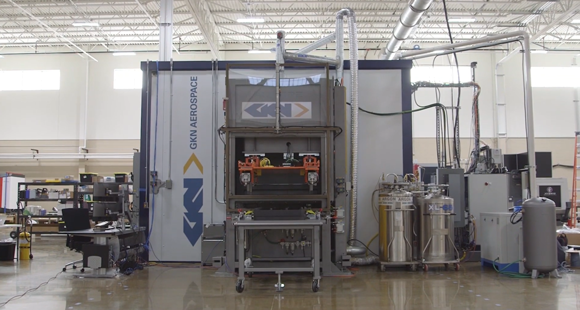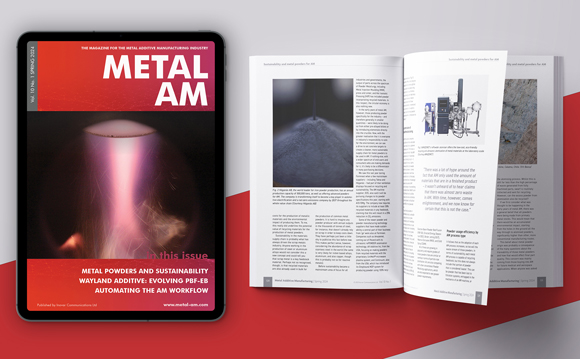GKN Aerospace commissions second pilot production cell for large-scale metal AM at ORNL
June 17, 2019

GKN Aerospace’s pilot production cell at Oak Ridge National Laboratory (Courtesy GKN Aerospace)
GKN Aerospace has commissioned its second pilot production cell for large-scale metal Additive Manufacturing at the U.S. Department of Energy’s (DOE) Oak Ridge National Laboratory (ORNL), Tennessee, USA. Located at the DOE’s Manufacturing Demonstration Facility at ORNL, Cell 2 is said to be the largest pilot production cell of its kind in the world and represents the next stage in GKN Aerospace’s AM research and development targeting the manufacture of large-scale structural aircraft components using Laser Metal Deposition with wire (LMD-w).
Mike McCann, CEO of GKN Aerospace’s Aerostructures North America, stated, “We are proud to introduce the next step in our Additive Manufacturing research as we continue to push the boundaries of this transformative technology. We believe this to be the largest LMD-w pilot production cell in the world. With this, we will target large-scale aerostructure components with a focus on dramatic improvements in buy-to-fly and cost reductions over plate and forgings.”
GKN Aerospace has been using LMD-w technology for more than a decade, beginning at its aero-engine systems business, Sweden and, in 2017, expanding into large-scale aerostructures components with the signing of a five-year $17.8 million research agreement with ORNL.
“We are extremely proud to strengthen our relationship with this world-renowned laboratory to accelerate our progress towards fully industrialising these processes for large-scale aerostructures components. Through our cooperative research, we have seen first-hand how Additive Manufacturing will continue to revolutionise the design and manufacture of aircraft structures. This cell will allow us to create complex components without compromising performance,” stated McCann.
“Our research collaboration with GKN Aerospace demonstrates the rapid progress that can be made when industry and the national labs work hand in hand,” added Moe Khaleel, Associate Laboratory Director for Energy and Environmental Sciences at ORNL. “We are pleased to see our relationship with GKN expand, and look forward to continued technological innovation in our mission to translate science into solutions for advanced manufacturing.”
The 2017 agreement included the opening of GKN Aerospace’s first prototype cell at ORNL which, over the past two years, has transitioned technology from GKN Aerospace engines to aerostructures applications and implemented closed-looped controls to manage the process with complex geometries. Cell 2 is expected to help accelerate this work.
Features of Cell 2 include:
- A 20KW laser
- 8-axis motion
- A large area inert enviroment
- A 52in x 32in max substrate size
- Two-sided deposition capability
Applications of the cell are expected to include product development, low-rate initial production and the transition of technology development into production solutions. GKN Aerospace already has additively manufactured components flying on seven different major platforms today across the commercial, military, rotorcraft, business jet and space markets.
















